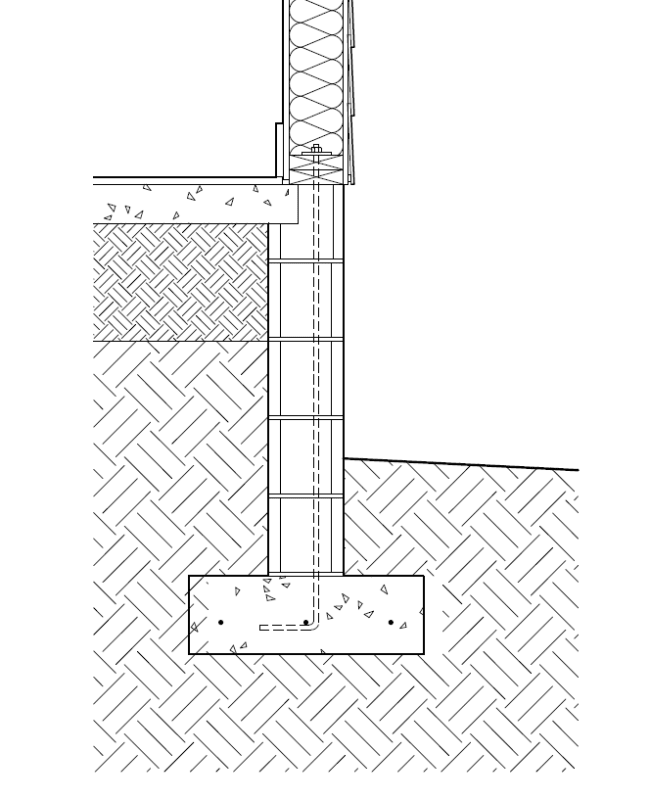There is a plethora of discussions and debates online regarding heat loss through slabs-on-grade. I've gone over several of the studies and different models that have been used. What I cannot seem to find is info regarding heat loss through a raised or elevated slab...stem walls backfilled with compacted fill and a 4" slab poured on top. Instead of "on-grade," the top of the slab is ~28" above grade. I've attached two foundation details for what I mean, one with an uninsulated slab and one with 2" of rigid foam insulation at the slab edge and along the inside of the stem wall down to the footing.
The F-factor (exposed linear foot method) for slab-on-grade heat loss calculation assumes ground contact with a specific soil type. It seems to me that an elevated slab would be significantly different in that regard as the slab is not in contact with the "ground," but rather with the compacted fill which is enclosed in the stem walls. Perhaps the most significant difference is the fact that much of the stem wall, (and therefore) the slab perimeter edge, the fill, and some of the soil underneath the fill, are above grade and in closer proximity to the outdoor air temperature than with a typical slab on grade where only 6"-8" of the foundation is above grade. I would imagine in both cases (insulated and uninsulated), the compacted fill under the slab would still be significantly warmer than the outdoor air temperature, but by what extent and to what effect?
So how would you calculate the heat loss for the attached details? Does anyone have any thoughts on this? Any advice would be greatly appreciated.


The F-factor (exposed linear foot method) for slab-on-grade heat loss calculation assumes ground contact with a specific soil type. It seems to me that an elevated slab would be significantly different in that regard as the slab is not in contact with the "ground," but rather with the compacted fill which is enclosed in the stem walls. Perhaps the most significant difference is the fact that much of the stem wall, (and therefore) the slab perimeter edge, the fill, and some of the soil underneath the fill, are above grade and in closer proximity to the outdoor air temperature than with a typical slab on grade where only 6"-8" of the foundation is above grade. I would imagine in both cases (insulated and uninsulated), the compacted fill under the slab would still be significantly warmer than the outdoor air temperature, but by what extent and to what effect?
So how would you calculate the heat loss for the attached details? Does anyone have any thoughts on this? Any advice would be greatly appreciated.


